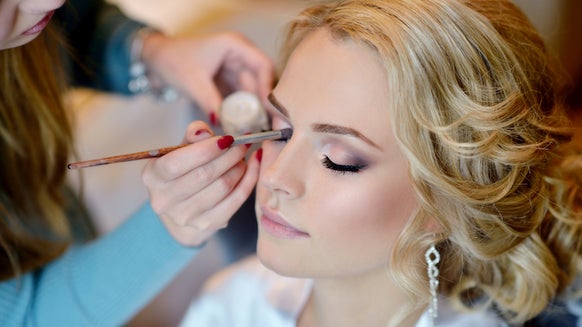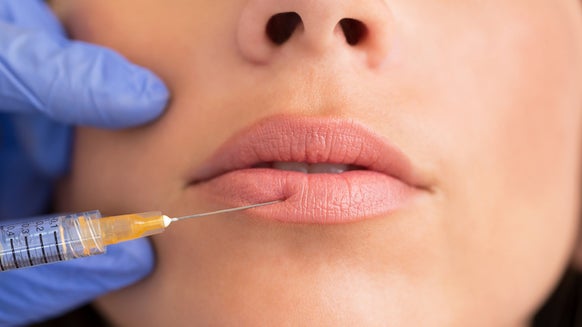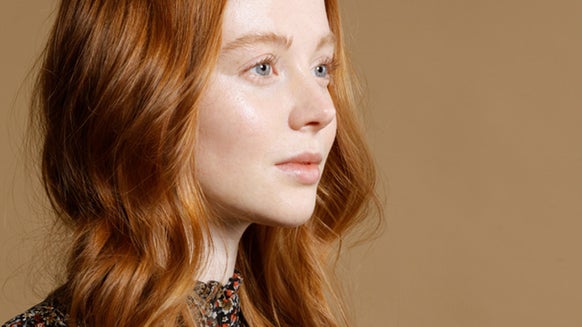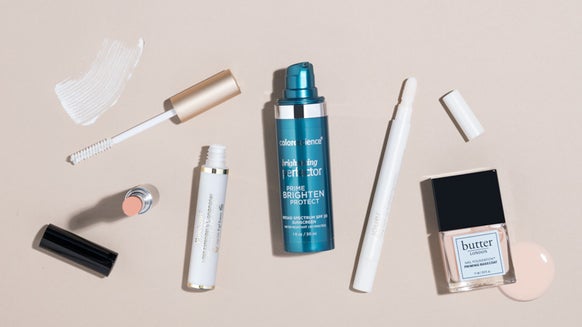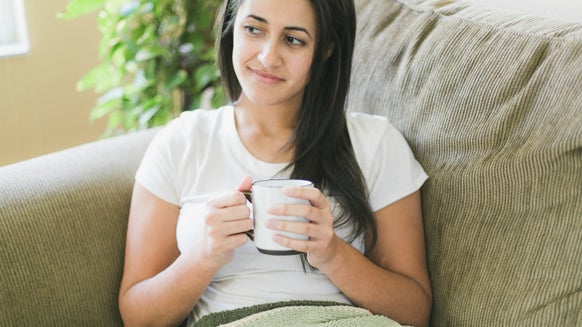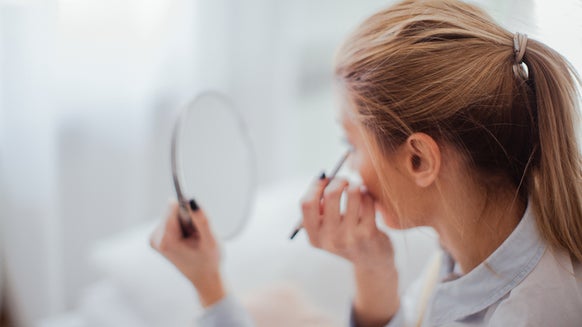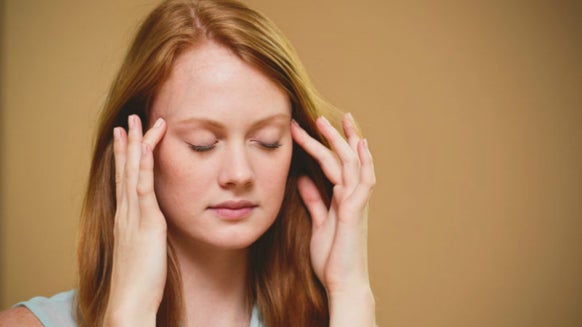What Is Cupping Therapy and How Does It Benefit Your Skin?
With wellness trends taking the world—or at least, the internet—by storm, it should come as no surprise that alternative medicine and healing practices are all the rage right now. That said, in recent months, one treatment, in particular, has completely stolen the show---and it involves using glass cups to treat a variety of respiratory and digestive ailments as well as improve the quality of your skin: cupping. But how does it work, exactly? Read on.
What Is Cupping Therapy?
Cupping therapy is a form of traditional Chinese medicine that uses glass cups to create a vacuum-like feeling on certain acupuncture points. According to Nikki Vanecek, a Traditional Chinese Medical Practitioner and founder of TCM Wellness Clinic, “traditional Chinese cupping is used to treat a wide variety of ailments, including muscle pain, soreness, inflammation, migraines, cramps and anxiety. It can also be used to relieve digestive conditions, as well as respiratory diseases, such as the common cold, pneumonia or bronchitis.” In addition to treating these ailments, cupping therapy comes with a host of benefits to consider. “Cupping improves blood flow, increases oxygen movement, improves the drainage of your lymph system, decreases pain and inflammation and helps you relax,” says Vanecek. “Some people say it feels like a deep tissue massage,” she adds.
How Does Cupping Therapy Work?
So, how does it work? According to Alissia Zenhausern, Naturopathic Doctor, NMD and cupping therapy practitioner, “A cupping session involves the use of glass or plastic cups placed on or surrounding the problem area. The vacuum created from the cups helps target the areas of deep tissue, which can help break down scar tissue and help relax tender muscles or connective tissue.” Despite some people comparing it to a deep tissue massage, Zenhausern says, “Cupping is the opposite of getting a massage since instead of applying pressure down, cupping helps pull pressure away from tense, tight muscles.”
The Benefits of Cupping Therapy
As mentioned, cupping therapy is used to treat a variety of ailments and can benefit multiple areas on the body, including the skin. In addition to improving blood flow, increasing oxygen movement and decreasing inflammation—all of which can promote healthier-looking skin—cupping therapy can help your body get rid of toxins. “Although the skin discolorations may not be pretty, they are important and help your body detox,” says Zenhausern.
In addition, cupping is used to target pain in the body. “Cupping has been used to release tissues deep inside the body, relax tense muscles and ease stiffness associated with chronic back and neck pain,” says Zenhausern. “It can also be used in patients with migraines and fatigue and with athletes it can help improve performance and reduces stiffness, muscle cramps, joint pains and scar tissue often caused by sports injuries,” she adds.
Types of Cupping Therapy
There are a few different types of cupping therapy to choose from. According to Zenhausern, the most popular form of treatment is dry cupping (also referred to as “fire cupping”). “This involves placing cups on the patient's back (or other problem areas) and then carefully heating the cups using fire,” says Zenhausern. “To light the cups on fire, a cotton ball is soaked in rubbing alcohol then lit and placed into the cup very quickly [before being] removed,” she adds. If this sounds absolutely terrifying to you, Zenhausern reassures that “although the cups are heated with fire, they are not hot or painful to the skin. The fire is simply used to help create a vacuum between the cups and the skin.” Once the cups are on the skin, they’re “sealed off and held in place for five to 15 minutes,” says Zenhausern.
Another type of cupping therapy to consider? Moving cupping. “This is very similar to dry cupping, but instead this technique involves applying massage oil to the skin prior to starting the treatment,” says Zenhausern. “Fire is still used to create a vacuum with the skin and cup, but this time the cups are moved along a targeted region. This can be extremely helpful in patients with muscle tightness, as it helps the body release stagnated regions,” she adds.
The third technique is called bleeding cupping or wet cupping. According to Zenhausern, this fireless technique “involves drawing the patients blood to the surface of the skin using a pump.”
Potential Side Effects
Like with any treatment, it’s important to consider the side effects of this treatment. “Cupping often leaves red, purplish marks that are similar to a hickey,” says Vanecek. “There might be some soreness after a cupping session as well, however, it’s not unlike the soreness you may feel after a good workout,” she adds. These bruises, according to Zenhausern, lasts “anywhere from a few days to a couple of weeks.”
Precautions to Consider
If cupping therapy is something you are excited about, we don’t blame you. That said, before booking an appointment with a certified practitioner, there are some important precautions to be aware of. “We don’t recommend cupping if you have a wound or a sunburn,” says Vanecek. “We also wouldn’t recommend it for an elderly person who has very thin skin,” she adds. In addition, Vanecek advises those with fibromyalgia “to seek out a practitioner who works specifically with that condition.”
Some other concerns to think about? Zenhausern says cupping therapy “should be avoided in a patient experiencing skin infections, inflammation, ulcer or skin sensitivities. It is also not recommended for patients that are pregnant.”
How to Do This Properly
Where and who you receive treatment from is also important to consider. Vanecek suggests only seeing a medically board-certified practitioner for cupping. “In most states, acupuncturists and physical therapists are the only medically licensed practitioners who can administer traditional cupping.”
In addition, Zenhausern says that before the treatment is administered to the rest of your body, it is important “to check using a small area of the skin to make sure your skin can tolerate the treatment.”
How to Care for Your Skin Post-Treatment
As Vanecek and Zenhausern mentioned, one main side effect of cupping is large, circular-shaped bruises that can last anywhere between a few days to a couple of weeks. Following the treatment, Vanecek suggests you “avoid showers, working out and exposure to the sun for at least two hours.” In addition, if you’re looking for a way to reduce the bruising, Zenhausern says to consider using topical Arnica montana cream. "This cream, which uses the powerful anti-inflammatory properties of the Arnica montana herb, can help heal tissue and reduce bruising quickly,” she explains.

From the latest hair and makeup trends to the best solutions for your skin issues, we've got all your beauty concerns covered!
Related Posts
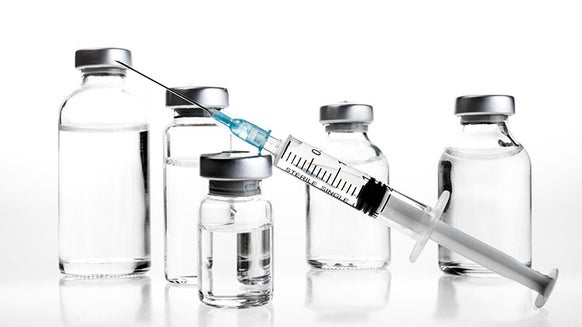
What to Know Before Getting Botox, Fillers and Other Minimally Invasive Cosmetic Procedures
